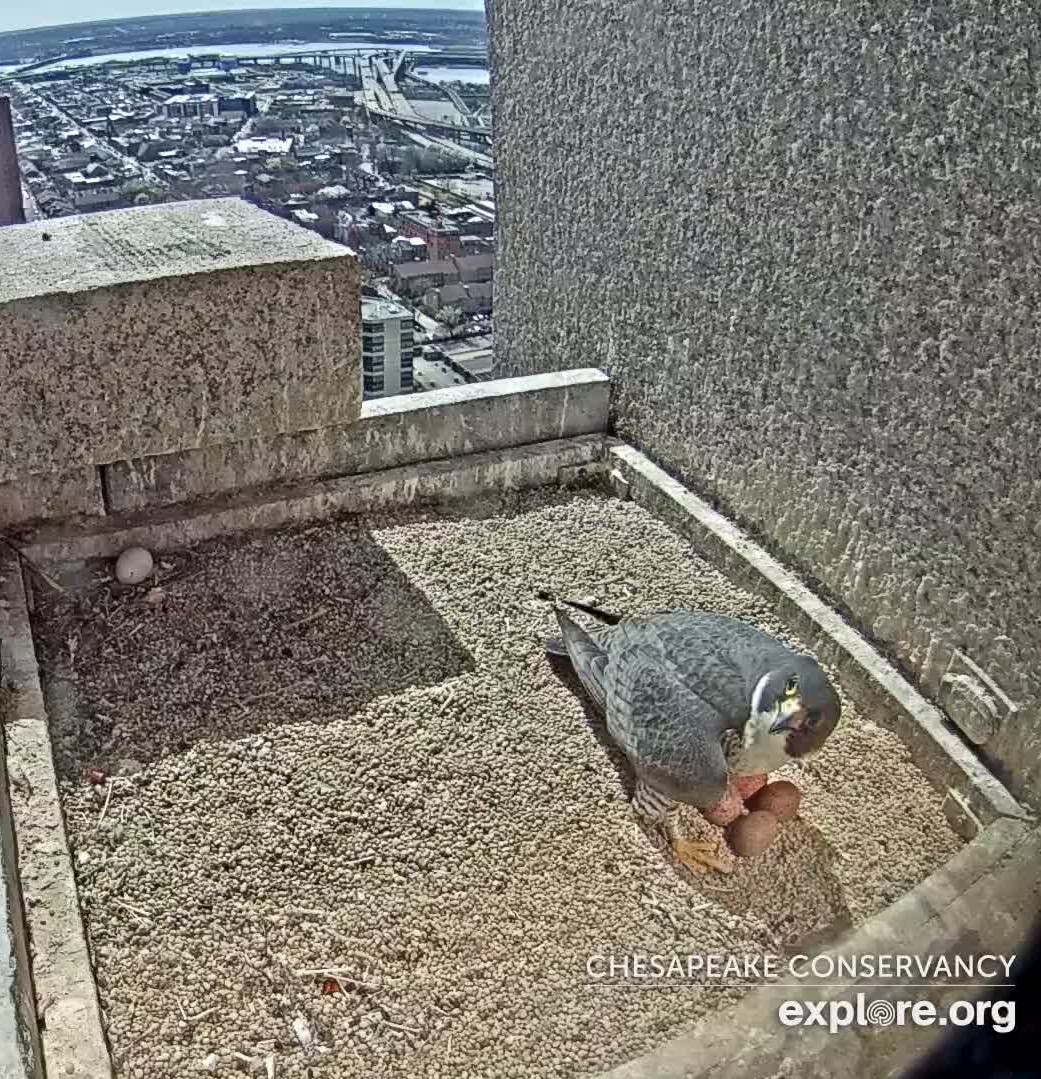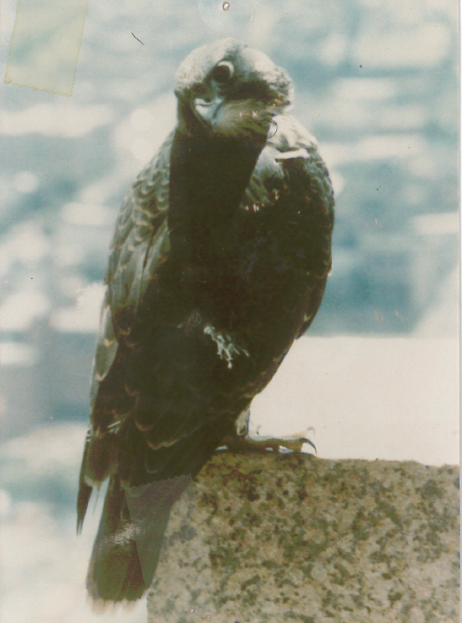Peregrine Falcon
DONATE
We hope you enjoy watching this webcam. If you would like to help us preserve their habitat, please donate.

About Peregrine Falcons:
Found on every continent except Antarctica, peregrine falcons (Falco peregrinus) are one of the best known conservation success stories and are believed to be the fastest bird in the world, traveling up to 200 mph during hunts. These amazing birds have recovered from near eradication in eastern North America, now making many large cities and coastal areas their homes.
After a drastic population decline from 1950-1970 due to pesticide poisoning, peregrine populations have rebounded due to a large-scale captive breeding and release program. Scarlett, the building’s first falcon, was released by the Peregrine Fund at the Edgewood Arsenal area on the Chesapeake Bay in 1977 as part of this effort. Her first successful mating in 1984 with a wild peregrine, later named Beauregard, produced the first natural-born peregrines bred in an urban environment on the East Coast in three decades.
Now, peregrine falcons are pervasive throughout the U.S., nesting on skyscrapers, water towers, cliffs, and more. Maryland’s restored peregrines have preferred man-made structures, like the 100 Light St skyscraper, to make their nest in the region. Structures like the Chesapeake Bay Bridge, Francis Scott Key Bridge, and Route 301 Potomac River Bridge have been known to have nesting peregrines as well.
Because peregrines prey on other birds, they are particularly susceptible to changes in the health of the surrounding environment. There is potential for a tremendous amount of bioaccumulation of chemicals in their bodies, threatening the health and productivity of any future offspring. To make sure this charismatic bird continues to thrive, we are working to ensure that river corridors remain protected and that the Chesapeake Bay can support abundant fish and smaller bird populations.
Learn more about the peregrine falcon with our frequently asked questions and fun facts here, explore our National Wildlife Refuge App, or visit one of our regions many national and state parks and refuges to see them in the wild!
If you enjoy our Peregrine Falcon Cam, please consider donating to the Chesapeake Conservancy to help us in our efforts to protect their Chesapeake habitat.
Click on the links below to view historical records and learn more about the peregrine falcons at 100 Light Street. Note: With the departure of USF&G from the building in the mid-1990s, records on the falcon family ended until the Chesapeake Conservancy’s cam went live in 2015.
Chronology of the Peregrines at 100 Light St
Fact Sheet for Baltimore’s Peregrines
Peregrine Offspring Record, 1979-1991
Biographies of Peregrines at 100 Light St
Archived Articles:
- Baltimore Sun, Falcon will be a dad for 14th time
- Baltimore Sun, Beauregard, fifth mate due to hatch baby falcons
- Unknown, Falcon adopts skyscraper
- News American, Rare falcon a pet topic among USF&G admirers
Sources: Cornell Lab of Ornithology, All About Birds – Peregrine Falcon, National Audubon Society, Peregrine Falcon and The Peregrine Fund.


